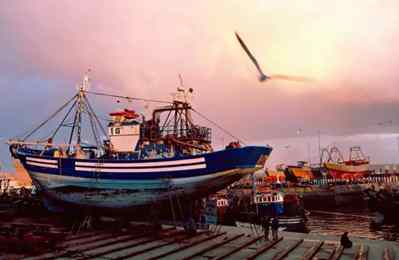Australia raises 2016-17 LNG exports forecast to 52.4 mil mt, 2017-18 to hit 67.3 mil mt

The Australian government has bumped up its forecast for LNG exports for fiscal 2016-2017 (July-June) to 52.4 million mt, and given an estimate for 2017-2018 of 67.3 million mt, the Department of Industry, Innovation and Science said Monday in its Resources and Energy Quarterly.
In its previous quarterly report, the department had the forecast for fiscal 2016-2017 at 51.50 million mt.
A rise to 67.3 million mt in fiscal 2017-2018 would be an 82.4% spike from the 36.9 million mt shipped in fiscal 2015-2016.
“The four LNG projects currently under construction are expected to commence production by mid-2018, bringing Australia’s LNG export capacity to around 87 million [mt],” the report said.
“However, some uncertainty surrounds the timing of Shell’s Prelude project in the Browse Basin, where start up could be complicated by the cyclone season — which runs from November to April,” the report added.
Increased exports to Japan, South Korea and China are expected to drive the rise in Australia’s export volumes.
“Australian producers are expected to capture an increasing share of these countries’ imports with the commencement of a number of long-term contracts over the outlook period [over 2017-2018],” the department said.
WANING NORTH ASIA DEMAND
Despite the expected rise in Australia’s exports to Japan — Japan’s overall imports are forecast to fall by 2.1% per year to 80 million mt in 2018, the report said.
“Subdued energy demand, a forecast decline in thermal coal prices, the expansion of renewable capacity, and the restart of nuclear capacity are all expected to weigh on [Japan’s] LNG imports,” it said.
Platts Analytics is even more bearish than the Australian government on Japanese LNG demand, with its 2018 forecast standing at 72 million mt.
A key uncertainty, the government report said, remains the timing and scale of nuclear restarts.
South Korea’s LNG imports are expected to remain subdued over the outlook period, with the fuel continuing to face competition from other energy sources as it expands both its nuclear and coal-fired power capacity, the department said in its report, but it did not give a forecast figure.
Platts Analytics expects South Korea’s LNG demand to be 33 million mt in 2017 and 32 million mt in 2018.
The Australian government forecasts that China’s LNG imports will rise by 34% year on year to 43 million mt in 2018.
“China is aiming to raise the share of gas in its energy mix from 5% to 10% by 2020, with policy efforts directed at the electricity generation and transport sectors,” it said.
Platts Analytics, however, expects softer demand from China with 32 million mt forecast for 2018.
The quarterly report expects world LNG imports to rise by 10% per year to 306 million mt in 2018, which compares to Platts Analytics’ forecast of 334 million mt.
LNG SUPPLY CAPACITY TO RISE
Global LNG supply capacity is forecast to rise by 11% in 2017 and 8.8% in 2018 to 343 million mt, the Australian government said, compared to a forecast of 396 million mt by Platts Analytics.
A senior advisor from Platts Analytics said the gap in forecasts could be due to a different view on when American and Australian trains will come to the market.
The unit value for Australia’s LNG exports is forecast to rise marginally from $6.6/MMBtu in 2015-2016 to $6.7/MMBtu in 2016-2017, before rising to $8.0/MMBtu in 2017-2018, the report said.
“The recent rally in spot prices is expected to be temporary, with the entry of new capacity in the US and Australia ensuring that the market remains well supplied,” it said.
“The implications of a potential divergence between contract and spot LNG prices remains to be seen. One scenario is that buyers reduce LNG purchases to ‘take-or-pay’ levels, and seek to buy largest volumes on the spot market,” it added.
A divergence between spot and contract prices would also encourage buyers’ efforts to renegotiate pricing mechanisms in LNG contracts, the report said.
Source: Platts
HEADLINES
- Do shipping markets want Biden or Trump for the win?
- All 18 crew safe after fire on Japanese-owned tanker off Singapore
- Singapore launching $44m co-investment initiative for maritime tech start-ups
- Cosco debuts Global Shipping Industry Chain Cooperation Initiative
- US warns of more shipping sanctions
- China continues seaport consolidation as Dalian offer goes unconditional